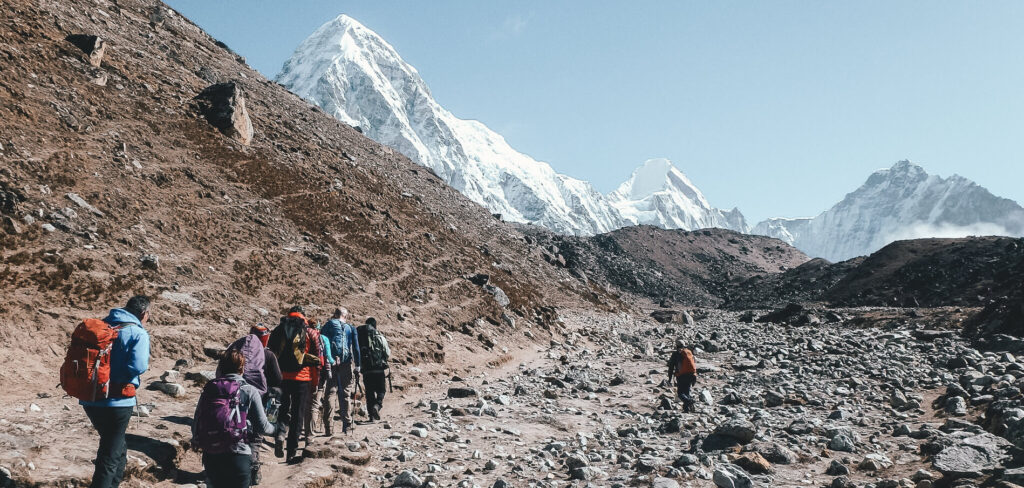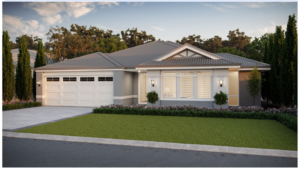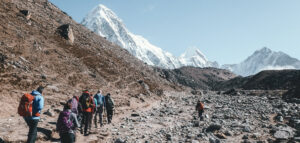Finding budget lodges on the Manaslu Circuit Nepal is an important aspect of preparing for the journey to do the trek. The trek leads you through remote mountain villages and high alpine mountain terrain, so accommodation is not always abundant and certainly varies in cost and comfort. While the lodges are well-equipped, spacious, and not at all ‘rustic’, with some thought and a different approach entirely, trekkers can secure comfortable lodgings without pillaging the purse, leaving more wiggle room in the budget for other areas of the trip.
The range of options along the route is one of the most important aspects of finding cheap accommodation. The majority of accommodations are in teahouses, basic guesthouses providing simple rooms and meals. These teahouses are usually family-owned and offer a warm, welcoming space, with shared bathrooms and common dining areas a staple. Rates will vary based on location, elevation, and season. Villages at a lower altitude typically have cheaper rooms with better amenities and services, while stops at altitude near a high pass could be more expensive; they may justify it based on the difficulty in transporting supplies.
It is not typically required to book accommodation on the Manaslu Circuit in advance, particularly if you’re trekking in the offseason of the less crowded spring or autumn. But, during trekkers’ high season or if you prefer certain lodges, booking in advance can allow you to avoid last-minute price increases or full lodges. Flexibility is an advantage as well — sometimes walking an extra mile or two to the next village will equal cheaper lodging.
Local customs are important to know, and showing respect can earn you better rates or upgraded accommodations. It’s just that teahouse owners get a significant portion of their income from trekkers, so cultivating friendly relations generally works to both parties’ advantage. It’s also a good idea to bring some cash in local currency, as not all teahouses accept credit cards or payments using a digital app.
For cost-cutting trekkers, dorm and shared rooms may be arranged where available. These fryers are much more economical than reserving private rooms. Carry your sleeping bag as it can save the cost of bedding and provide assurance of hygiene and comfort.
Food and beverages are frequently included, or can be obtained along the route at teahouses, but the price will rise as you go higher, reflecting the transportation difficulty. Buy snacks and necessities before your trek, or at one of the larger villages along the way, in order to save money on the trail.
Lastly, if you are part of a group or if you hire a local guide, then sometimes lodging costs can be cheaper since group orders are almost always entitled to discounts. Guides and porters know cheap places to stay, and they can help you haggle.
By using a combination of these approaches – what to expect, flexibility, respect local, and plan smart- trekkers can search and secure a very cheap night’s rest in what we believe is one of the most beautiful and underappreciated treks in Nepal: the Manaslu circuit. Not only does this save resources, it also adds an extra layer of experience, allowing you to meet real people in real communities and learn what traditional mountain hospitality in the Himalayas is all about.
What are the available kinds of lodges in the Manaslu Circuit trek?
During the Manaslu Circuit trek, you will mostly stay at teahouses and guesthouses that are located along the trail. These are typically family-run places with basic rooms furnished with simple beds. Most teahouses offer dormitory-style accommodation, where you will sleep in a communal room, or private rooms, which are more expensive. Facilities can vary, depending on your location and altitude: the lower villages have better toilet facilities (some even have attached bathrooms), whereas higher stops offer fewer options, sometimes just shared or pit toilets.
Walking passes through teahouses generally include meals, which simplifies budgeting, but food prices rise with altitude due to transport difficulties. Hot showers may be on offer in some places, though there is sometimes an additional fee. Electricity is often scarce, so you might have to pony up a little cash to charge a device, or find travelers tapping into solar power.
While there are expensive lodges on the busier trails, on the Manaslu Circuit, the decent, hiker-friendly lodges are basic, but everything you need. This is part of the adventure of trekking, but one that demands flexibility and preparedness. In search of a budget, trekkers often stay in shared rooms and bring their sleeping bags for cleanliness and warmth.
In general, the knowledge of the types of accommodations aids trekkers in preparing for their budget and trip expectations.
Do You Need to book Manaslu Circuit Trek Accommodations in advance?
Pre-booking accommodation on the Manaslu Circuit trek is rarely necessary, particularly if you trek in the less busy spring and autumn seasons. Most teahouses work on a first-come, first-served basis, and the fewer number of trekkers you encounter along the route than elsewhere on the other iconic treks, the more likely you can score a bed along the way.
But during busy trekking season, for the big festivals or holidays, or if you have a certain lodge that you would like to stay in, booking ahead can avoid any anxiety and ensure you end up in the accommodations of your choice. Near passes such as Larkya La in the higher elevation reaches, rooms may be scarce, so reservations are probably a good idea.
The Manaslu Circuit is all about flexibility. If you’re not booking in advance, best to start early in order to arrive at villages before nightfall for better accommodation options. Occasionally, a short walk to the next village can also offer something cheaper or more comfortable.
An additional benefit of hiring a local guide is that they can help organise accommodation on the trek. They generally know which teahouses offer good value and can assist with bookings if needed.
How can trekkers save money on accommodation in the Manaslu Circuit?
In Manaslu Base Camp Trek, trekkers can wallet a few pennies by settling for a dormitory room/shared room rather than a private room in the guest houses. Sleeping in a room with other fellow trekkers reduces the price immensely, which means you can spend your money on other trekking necessities.
Bringing your sleeping bag can also be a great way to save. Rates may apply at most teahouses to use bedding, and bringing your sleeping system ensures cleanliness and warmth, particularly in colder months and higher elevations.
Flexibility in walking distances each day can help further lower accommodation costs. There are often cheaper and superior facilities in larger villages down the trail compared to small, distant, high-altitude stops where supplies are scarce and prices go up.
Not going during high season and trekking during the shoulder months could result in a discounted price and more negotiating power. Building good relationships with teahouse owners can sometimes open up opportunities to negotiate better deals or get free extras such as hot showers.
Finally, trekking as a group and booking rooms together can result in discounts, so traveling with others is another savvy way to cut the expense of lodging.
So, what are the average prices for accommodation on a Manaslu Circuit trek?
Costs of accommodation on the Manaslu Circuit trek depend on location, altitude, and season. In villages at lower elevations, teahouses charge between $5 and $10 per night for a basic private room; a dormitory bed can cost as little as $2 to $5. Rates tend to increase and are higher at higher elevations, with a basic private room beginning at $10 to $15 or more.
Prices can spike slightly at peak trekking times, mainly around high passes (such as Larkya La). Other very remote and difficult to access lodges may charge high rates because they have to ship in supplies.
Most teahouses offer full meals in their pricing, but with food, prices also rise with elevation and isolation. And you might pay extra for a hot shower, electricity to charge your devices, or other amenities.
Frugal trekkers who share dorm accommodation, come with their sleeping bags, and minimize extras can keep their accommodation costs down to as low as, on average, under $10 per night. Flexibility and the willingness to walk farther to a particular village with better rates also help keep costs down.
How much money should you take for lodging on the Manaslu Circuit?
Climb Manaslu It’s important to bring enough money when trekking the Manaslu Circuit, as most teahouses don’t accept your credit or debit card. In many remote villages, and particularly at higher altitudes, there is little or no digital payment infrastructure in place, meaning cash is king when it comes to payment for accommodation, food, and other necessities.
Nepalese rupees are the local currency, and it is best to have smaller notes for transactions. You can withdraw or exchange money in bigger towns – Kathmandu, Besisahar, or Arughat- before the trek.
It is really recommended that you plan to not become short of money during the trek, as there are few ATMs along the route and banks or money exchange services can be found exclusively in big villages.
And some teahouses might charge for extra services, such as hot showers, electricity, or bottled water, all payable in cash. Carrying cash also provides travelers with the flexibility to haggle over prices or tip local staff.
In the end, a good wad of cash will be nothing but beneficial and will keep your mind at ease throughout your Manaslu Circuit cooperative journey.
What are the 5-star, 3-star, and luxury hotels near Manaslu Circuit?
The Manaslu Circuit is famous for its basic, basic teahouse accommodations, but there are increasing numbers of mid-range and luxury options that have been cropping up along the trail, particularly in the larger villages. They offer more comfort, all with private bathrooms, hot showers, Wi-F, and larger rooms. But these alternatives are more expensive, up to two or three times the price of regular teahouses.
There a, however, an increasing number of luxury lodges at the more popular trekking hubs, but far fewer in the more remote sections of the circuit. Season and demand play a big role in availability. If you demand your comfort and amenities, plan and book this; otherwise, they can fill up quickly in popular trekking seasons.
Although you may be swayed by the idea of the luxury experience, the truth is that for many trekkers, staying in the basic teahouses feels much more authentic and is much softer on the wallet. It might be worth paying a few more dollars for mid-range lodges if hikers are looking to take a break from the rustic, to say nothing of the days-long conditions.
It’s also essential to balance your ideal comfort level with the limit of your spending. For most people, alternating between simple teahouses and the occasional budget hotel was an effective way to enjoy the trek without breaking the bank.
What are the accommodation availability and rates according to altitude?
Altitude has a big effect on the proportion of accommodation and the cost of the Manaslu Circuit trek. Villages at lower altitudes (everything under 3,000 meters or so) tend to be a little more developed in terms of lodging options (with a handful of guesthouses and teahouses competing with each other for good prices).
Manaslu Circuit Trekking The trail rises into higher altitudes; above 4000m, particularly in the Larkya La, there will be little teahouse competition. The accommodations are mainly small, unpretentious places with more basic amenities and fewer rooms. The paucity of supplies and the challenges of getting goods to these remote places inflate prices.
Higher-up accommodation is often more expensive, as food, fuel, and bedding must be carried up by porters or yaks (costing tens of thousands of dollars a year), creating extra operational costs. Power is scarce, meaning charging devices or access to hot showers might require extra fees.
Trekkers should expect that the ascending cost of living increases the higher you go, and adjust their budgets accordingly. Apartment sharing and a willingness for communal living may also be helpful.
Would it help to hire a guide or porter in terms of finding cheap accommodation?
Trekker hiring a local guide or porter can be helpful in looking for inexpensive and reliable Manaslu Circuit accommodations for a stay. Guides will know the route well and which teahouse will have the best value, cleanest beds, and which guest house has the best view. Their connections with local owners can sometimes yield better room rates and upgrades.
Coolstays also helps with logistics – booking rooms during busy periods or in remote places where places to stay are in short supply. Porters, whose official role is to carry gear, also help by sharing their best tips on the places to stay.
Also, going with a guide or porter will make safety and comfort better, especially in some tough stretches and with language difficulty. This convenience usually makes the extra cost worthwhile.
But if you hire a guide or porter, this ups the total cost of the trek, so it’s worth considering the pros and cons of what you can afford. For people who are trekking for the first time or do not know the region, it is a purchase that enhances the trekking experience and saves you from some troubleshooting for accommodation on the trek.
How do the trekking seasons affect the accommodation rates at Manaslu Circuit?
The time of trekking affects the cost of things like accommodation on the Manaslu Circuit. The two primary seasons for trekking – spring (March to May) and autumn (September to November) – are the busiest periods with the greatest numbers of trekkers visiting. There is more demand for accommodation at these peak times, and sometimes teahouse owners charge a little bit more, as the teahouse fills easily.
But in the springtime, the rhododendrons are in bloom and the weather is milder, and in the fall, the skies are clear and the distant mountains are more visible, so more people come. And with less space available, rooms fill up more quickly, and prices reflect that added demand.
Manaslu Trekking The monsoon months (June to August) see a significant drop in trekking due to heavy rains, mud, leeches, and the risk of landslides. Accommodation costs are lower or up for negotiation, but many teahouses might be closed or provide limited services.
The quietest period is in winter (December to February). Some lodges are still open, but cooler weather and snow discourage all but the heartiest trekkers, pushing prices downward. But some facilities may be limited.
Selecting the season to trek could be your best money-saving deal, but it also ties into the weather and your trek experience as a whole.
Any suggestions for bargaining with the price of accommodation during the trek?
Bargaining accommodation prices on the Manaslu Circuit is a handy thing to be able to do, especially in the shoulder months or if staying more than one night in the same teahouse. Although prices do get locked in at certain times of the year, the owners are usually negotiable during the slower months in order to attract guests.
To negotiate effectively, being polite, respectful, and patient is useful. Developing a rapport with the teahouse owners by showing interest in their culture or asking about their communities can engender goodwill, increasing the odds that you may receive a better bargain.
Another strategy is to offer cash, as some teahouse owners prefer cash and such payments do not incur bank charges or possible delays.
If you’re traveling in a group, bundling multiple rooms or nights can, in some cases, reduce the per-night rate. And haggling for extras, like free hot showers or laundry services, can enhance your stay without decreasing the room rate.
And lastly, arriving earlier in the day means you have plenty of time to browse around and shop the competition before making your decision. The ability to move on if a deal doesn’t suit can also help encourage owners to lower prices.
How much guide cost for the Manaslu Circuit trek?
The cost of hiring a Manaslu Circuit trek guide will usually set you back between $25 and $ 40 per day, depending on the season, experience, or what services are included in the price. Included in this fee are typically guiding, assistance with permits, and, at times, the organization of accommodations. Food and accommodation may also be offered as part of the daily rate of some guides, so it’s important to clarify what is included before hiring.
Guides will greatly amplify your trek by imparting local understanding, ensuring a safe passage, helping with directions, and working as interpreters with locals. Because the Manaslu Circuit is not as developed as a popular trek such as Everest Base Camp, a guide is recommended, particularly in light of the several permits needed and the remote nature of the path.
Manaslu Peak Hiring a porter to carry luggage is an extra cost, typically $15 to $25 per day. Together, guides and porters can help make the trek safer and less physically taxing.
Costs are subject to negotiation, the trekking season, and whether you trek with a trekking company or independently. Do confirm the total price in advance and ensure that you’re with a guide who’s licensed by the Nepal Tourism Board.
How to plan your trek to the Manaslu Circuit?
There are a few crucial steps when planning for the Manaslu Circuit trek, need to happen to make it smooth and a great, successful trek. Begin by selecting the optimum trekking season—spring and fall provide the best weather and the clearest mountain views. Then get the permits you need, including the Manaslu Restricted Area Permit and the Annapurna Conservation Area Permit. These can be arranged through licensed trekking companies.
Physical fitness is essential because the trek is moderately difficult to difficult, crossing high-altitude passes. Prior to heading out, focus on building a resistance to fatigue through cardiovascular and strength training. Choose whether to take a guide or a porter for assistance and ease of travel.
Organize flights or transport to the trailhead, often from Arughat or Soti Khola. Take appropriate clothing and gear for any change in the weather – warm clothes, waterproofs, good boots.
Factor in time to acclimatize into your itinerary – you’ll need it, especially over higher passes such as Larkya La. Teahouse accommodation along the way is easily booked, but bring a sense of adventure as accommodation and facilities are basic in places.
Finally, think about travel insurance that will cover high-altitude trekking as well as emergency evacuation. Careful preparation makes it even safer and even more enjoyable on this stunning route.
Is the Manaslu Circuit is it harder than the Everest Base Camp?
The challenge level of the Manaslu Circuit relative to the EBC trek. This also depends on other factors such as altitude, type of trails, and hiking experiences. Overall, the general impression is that the Manaslu Circuit is more difficult because the trek is longer, more isolated and the altitude gains are greater if you compare the highest pass of the Manaslu Circuit, Larkya La Pass (5,106 meters) with the highest point you reach on the EBC trek, Kala Patthar (5,545 meters), since it is a side trip.
Hiking to Manalsu (Manaslu Tee-house Trek) / 8+ days Trekking around Manaslu summit (part Te-house/lodge): Manaslu circuit is mountainous and without much development. There is a potential for altitude sickness from both treks, but acclimatization is even more essential on Manaslu due to the rapid gain in elevation coupled with a lack of medical facilities.
The Everest Base Camp trek is more heavily trafficked and better facilitated, meaning that there are more lodges, established systems for rescue, and more guides with experience. Because the Manaslu Circuit is so remote and has less support infrastructure, there are added logistics and uncertainties about weather or trail conditions.
Overall, if serene solitude and challenge and adventure with moderate precipitation to trek bother-free free, Manaslu is a tougher, rewarding trek. First-time trekkers or those who prefer more infrastructure may find it easier to manage Everest Base Camp.
What do you need to take for your Manaslu Circuit Trek?
Manaslu Mountain What to pack for the Manaslu Trek – packing list. The Manaslu Circuit packing list should be carefully chosen, as you will encounter varied weather and remote territory. Need: – layered clothing: moisture-wicking base layers you could strip down on a hot day, insulating mid-layers such as fleece or down jackets which could help to keep you warm on cooler days, and there are also waterproof outer shells to help shield you from rain and wind.
What to wear: Sturdy, well-worn-in walking boots with good ankle support are vital, as well as warm socks to avoid blisters. A rain cover for a sleeping bag with the ability to withstand subzero temperatures, and trekking poles are also advised.
Other essential gear includes a headlamp, reusable water bottles, purification tablets or a filter, sunscreen, sunglasses, and a first-aid kit with altitude sickness medication. We also appreciate the personal hygiene items and quick-dry towels.
Attentive to electronic stuff and cameras, a power bank, and chargers need to be packed with as little expectation of electric supply along the way as possible. Take plenty of cash in Nepalese rupees as ATMs are few and far between.
Last, keep your travel documents, permits, and insurance with you. Packing light, efficiently, and for cold and changing weather conditions is key to staying comfortable and safe on this challenging trek.








More Stories
The Partner visa – helping your loved one get on Australian shores!
Capturing Precious Moments with Newborn Photography in Edmonton
Protected: How to Choose the Best Bar in Dubai for Your Nightlife Experience?